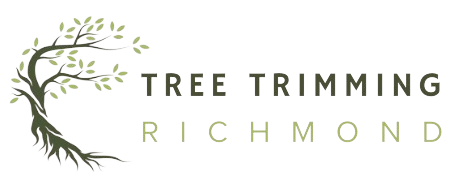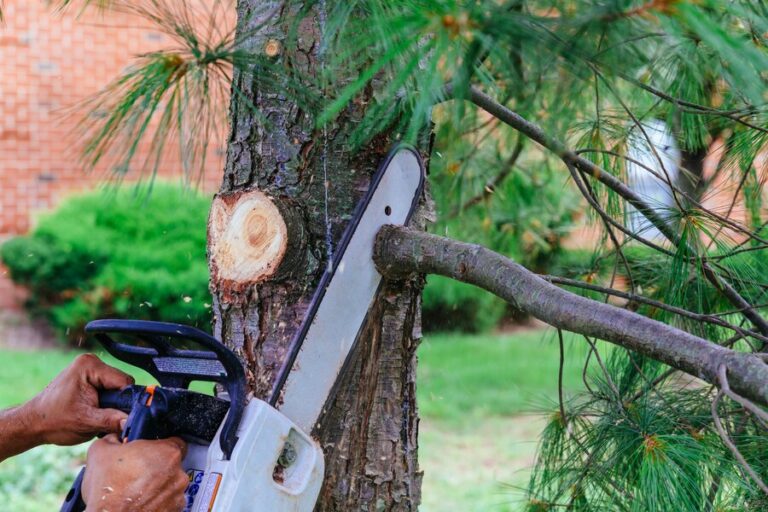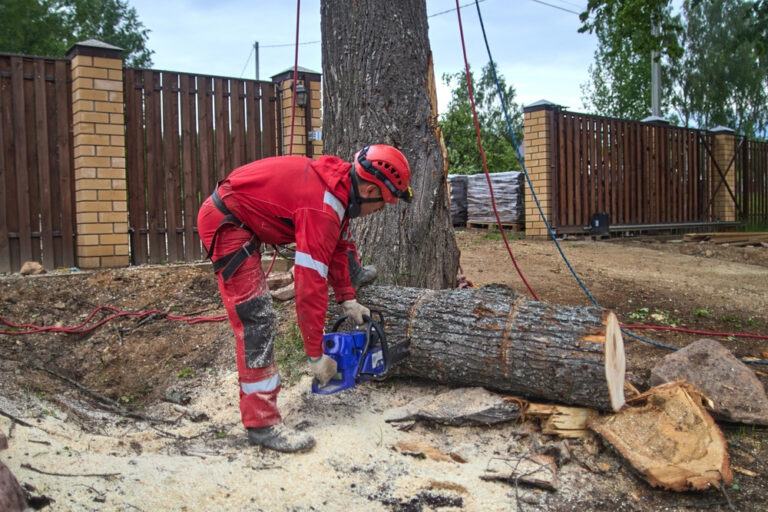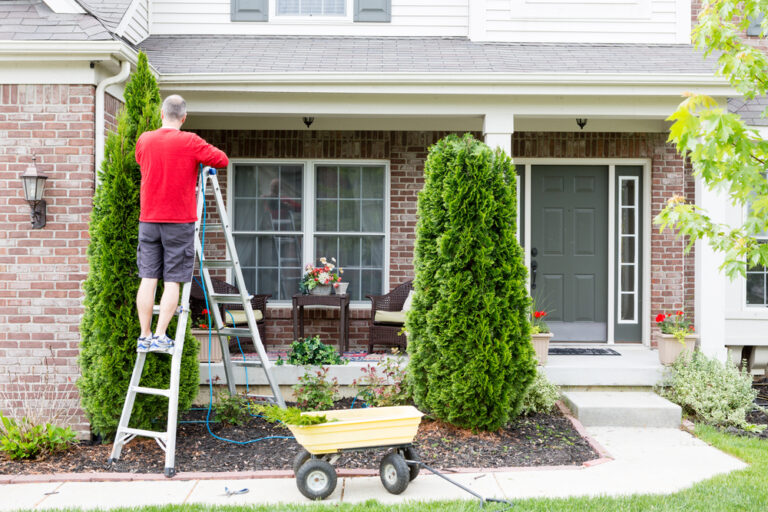Tree Fertilization 101: When and How to Feed Your Trees
Essential components of our surroundings, trees offer clean air, shade, and beauty. Trees, like other living entities, require nourishment if they are to remain healthy and develop. Tree fertilizing provides the nutrients required for robust root development, disease resistance, and tall, luxuriant growth. Knowing when, why, and how to fertilize can help you ensure your trees flourish. This tutorial will address all you need to know to maintain your trees healthy and happy by appropriate fertilization.
Although most of their nutrients come from the ground, occasionally the soil lacks the necessary elements for trees. By adding these lacking nutrients, fertilizing a tree helps it to flourish more robustly and live longer. Still, it’s wise to check your soil before you begin. Finding lacking nutrients from a soil test will help you choose the correct fertilizer for your trees.
Learning tree fertilization 101 will enable you to assist your trees in acquiring the nutrients they require to remain gorgeous and healthy for many years.
Why Fertilize Your Trees?
While trees in our yards often require some encouragement, wild trees grow organically without human intervention. Fertilizing your trees will help to significantly improve their condition.
Nutrient Deficiencies: Trees need a balanced supply of nutrients, much like individuals need from a diet. Common nutrients required of trees are potassium (K), nitrogen (N), and phosphorous (P). A tree lacking certain nutrients may exhibit symptoms of weakness including yellow leaves, poor development, or thin limbs.
- Common Nutrient Deficiencies in Trees: For foliage development, most trees require nitrogen; for robust roots, phosphorous; and for general health, potassium. Deficiencies in these elements can make tree survival difficult.
- Symptoms of Nutrient-Deficient Trees: Nutrient-deficient trees exhibit symptoms such Essential nutrient deficient trees may have yellow leaves, poor or stunted development, weak branches, or less leaves overall.
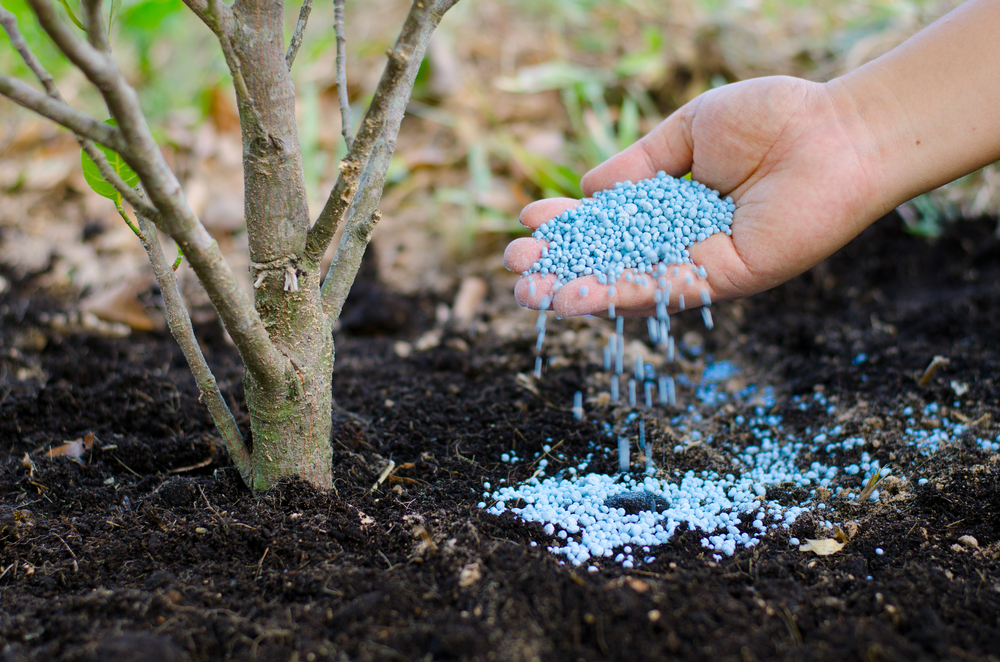
Improved Tree Health: Trees establish strong roots, fight illnesses, and produce healthy, vivid leaves when they acquire the proper nutrients.
- Stronger Root Systems: Correct nutrients promote the development of deep, strong roots, which support tree anchoring and more efficient absorption of water.
- Increased Disease Resistance: Fertilized trees are more suited to combat pests and illnesses. If harmed, nutrients enable trees to mend themselves, therefore strengthening and encouraging them.
- Enhanced Growth and Development: Fertilizing helps trees grow taller, fuller, and more beautiful—qualities especially crucial for younger trees still under development.
When to Fertilize
Just as vital as understanding how to fertilize is knowing when to fertilize. The way the tree gets the nutrients can be much changed by timing.
Timing: Most trees should be fertilized early spring or late fall. These are the times when trees most absorb nutrients, which helps them to save energy for development.
- Early Spring or Late Fall: Trees need lots of energy since they are waking from winter and beginning to grow. Early spring fertilizing offers trees a boost just as they are ready to produce fresh leaves. Fertilizing late fall helps the tree save nutrients for the winter.
- Factors That Affect Timing: Furthermore influencing the timing might be the type of tree and the temperature. Learning about the particular requirements of the trees in your yard is a smart idea since some trees might gain from fertilizer at different periods.
Frequency: Not every tree should be fertilized annually. While established trees might just need it every few years, younger trees could gain from more regular fertilization.
- How Often to Fertilize Young Trees: Still growing young trees can require more fertilizers than adult plants. Every year in early spring, fertilizing them will allow them to flourish quickly and powerfully.
- Adjusting Frequency for Mature Trees: Modifying Frequency for Mature Trees Fertilizer is not as needed by mature trees. As advised by your soil test, or once every two to three years, you can fertilize them.
How to Fertilize
Knowing when to fertilize now calls for learning how. Let’s investigate what would be ideal for your trees as there are several kinds of fertilizers and techniques for applying them.
Choosing the Right Fertilizer: Tree health might be much improved by the kind of fertilizer you decide upon. Organic and synthetic (chemical) varieties of fertilizers abound, and each has advantages.
- Types of Fertilizers (Organic vs. Synthetic): Organic fertilizers—made from natural resources like compost, bone meal, or manure—verbally differ from synthetic fertilizers. They enhance the soil by gradually releasing nutrients. Though they rapidly supply nutrients, synthetic fertilizers do not enhance the condition of the soil.
- Understanding N-P-K Ratios: Understanding An N-P-K ratio—that is, nitrogen (N), phosphorous (P), and potassium (K)—is frequently listed on fertilizers. These figures reveal the fertilizer’s contents of each nutrient. A 10-10-10 fertilizer, for instance, has exactly nitrogen, phosphorous, and potassium.
Application Methods: Fertilizer can be applied to trees in a number different methods, depending on the type and tree need.
- Broadcast Fertilization: Using a basic technique known as “broadcast fertilization,” you uniformly distribute the fertilizer around the tree’s base so that the roots may absorb it. With organic fertilizers, this approach performs really nicely.
- Root Feeding: Using a specialized injection instrument, you apply liquid fertilizer straight to the roots in this approach known as “root feeding.” Should your tree require nutrients rapidly, root feeding can be beneficial.
- Trunk Injection: Some fertilizers allow one to inject some straight into the trunk. Usually specialists perform this for trees with significant nutritional deficits.
Fertilization Techniques: Here’s a detailed guide on step-by-step fertilizing your trees to prevent typical problems including fertilizer burn:
- Measure the Area: Calculate the area surrounding the base of the tree to ascertain the fertilizer requirements. Usually based on tree size, most fertilizers will include directions on how much to apply.
- Apply Evenly: From the trunk, work your way outward to evenly coat the root zone with the fertilizer. Steer clear of packing stuff against the trunk.
- Water the Area: Water the area well following fertilization to enable the nutrients to penetrate into the ground and reach the roots.
- Avoid Fertilizer Burn: Steer clear of fertilizer burn by following the directions on the packaging. Using too much will “burn” the roots, so the fertilizer will actually damage rather than benefit the tree.
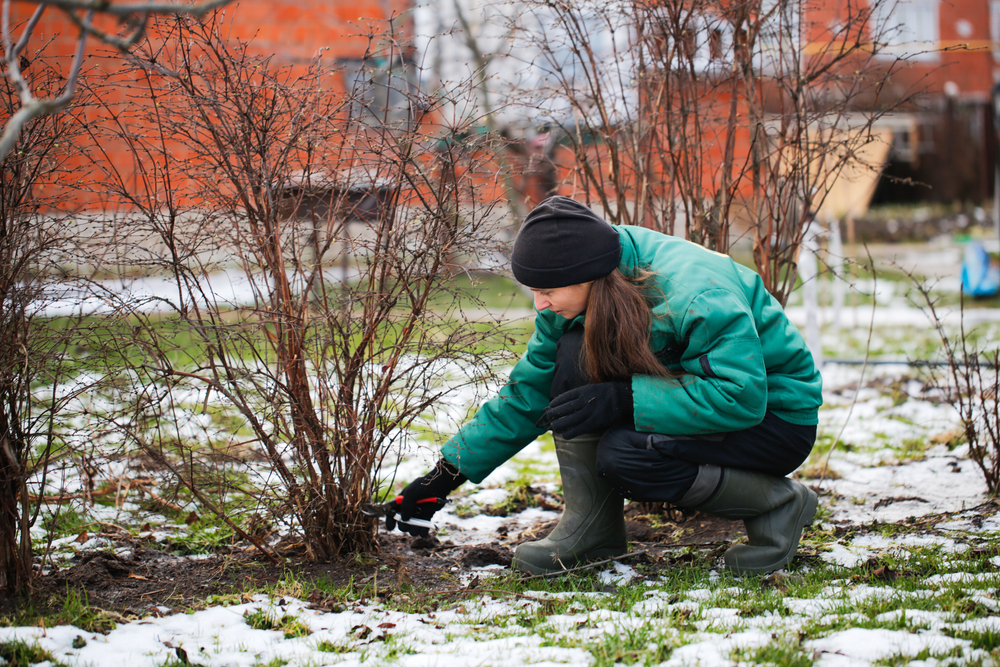
Additional Tips for Healthy Trees
Apart from providing fertilization, mulching, watering, and trimming help maintain your trees in good condition.
Mulching: Mulching helps to keep the ground around trees cool and moist while also shielding tree roots.
- Benefits of Mulching: Mulch shields the roots from harsh temperatures, helps the ground retain moisture, and controls weeds.
- How to Apply Mulch: Though keep it a few inches away from the trunk, cover the base of the tree with a 2-4 inch layer of mulch. Mulch piled against the trunk may decay.
Watering: Especially in their early years, trees require water. Frequent watering enables trees to absorb nutrients and grow robust roots.
- Importance of Proper Watering: Water’s importance is in helping nutrients move from the ground to the tree. Though you fertilize the tree, without enough water it cannot absorb nutrients.
- Watering Techniques for Healthy Trees: Methods of Watering for Optimal Tree Health Deeply water young trees once or twice a week. Watering every few weeks during dry seasons may aid mature trees.
Pruning: Pruning helps trees remain healthy and looking their best by removing dead or excessive limbs.
- When and How to Prune Trees: Pruning trees is best done late winter or early spring, before the tree begins to produce fresh leaves. Cut branches at a 45-degree angle using fine tools.
- Pruning Techniques to Promote Healthy Growth: Pruning Methodologies to Encourage Optimal Development Emphasize cutting off dead or damaged limbs and thinning down congested sections to let air and light reach the tree’s innermost sections.
Conclusion
One of the finest approaches to help trees flourish and maintain their health is fertilizing them. Understanding when and how to fertilize will help you ensure your trees receive the nutrients they need to flourish. Strong and beautiful trees result from regular maintenance including fertilization, mulching, watering, pruning.
Spend some time feeding your trees in line with the advice in this piece; you will have rich, healthy trees that improve your yard. Share this advice with others to help them to understand the need of tree fertilization and care.
Your trees will flourish for years to come with some knowledge and consistent maintenance!
Tree Trimming Richmond
(804) 533-3943
https://treetrimmingrichmond.com/
